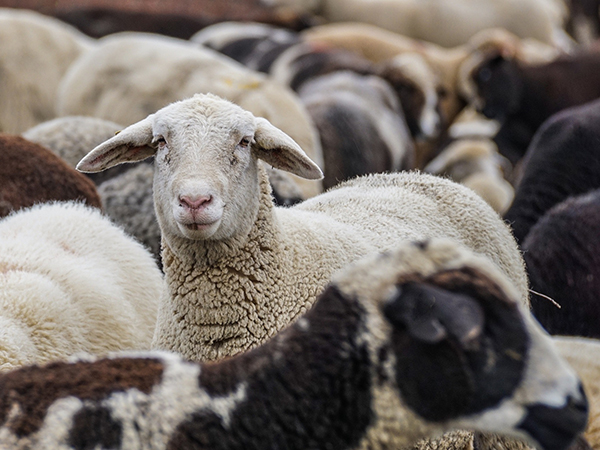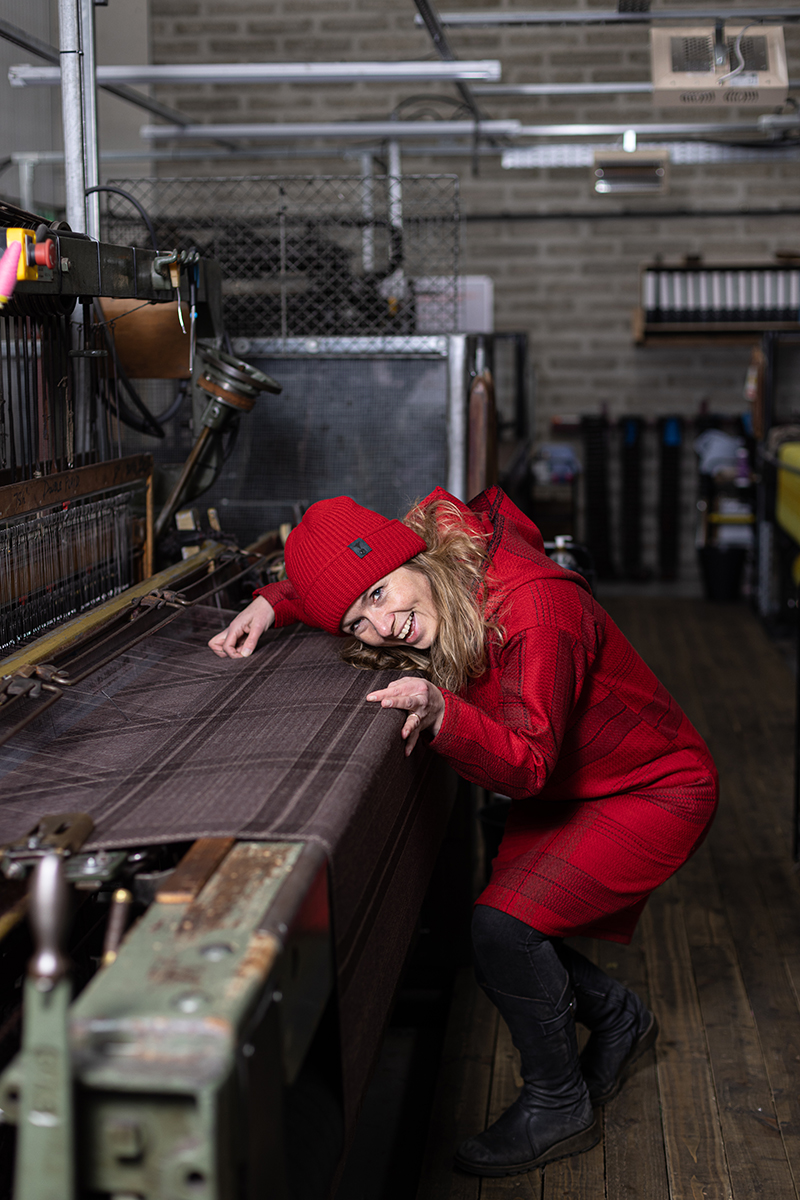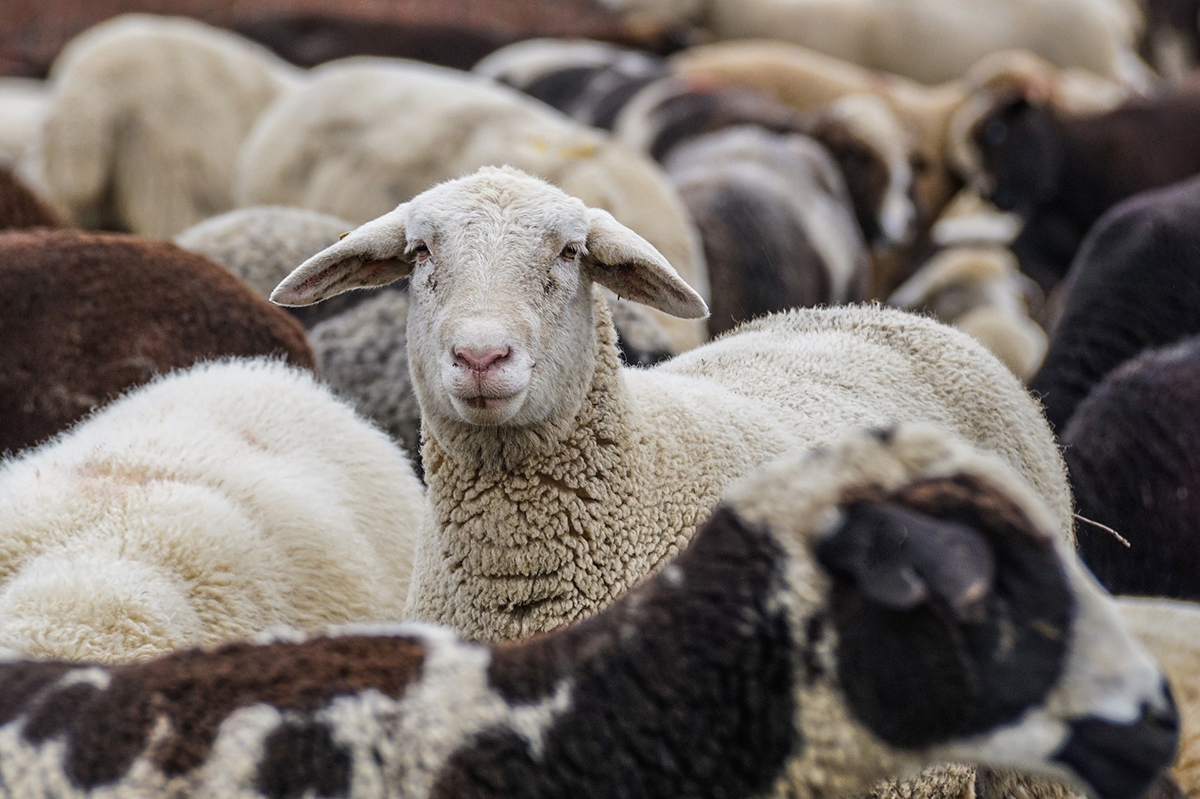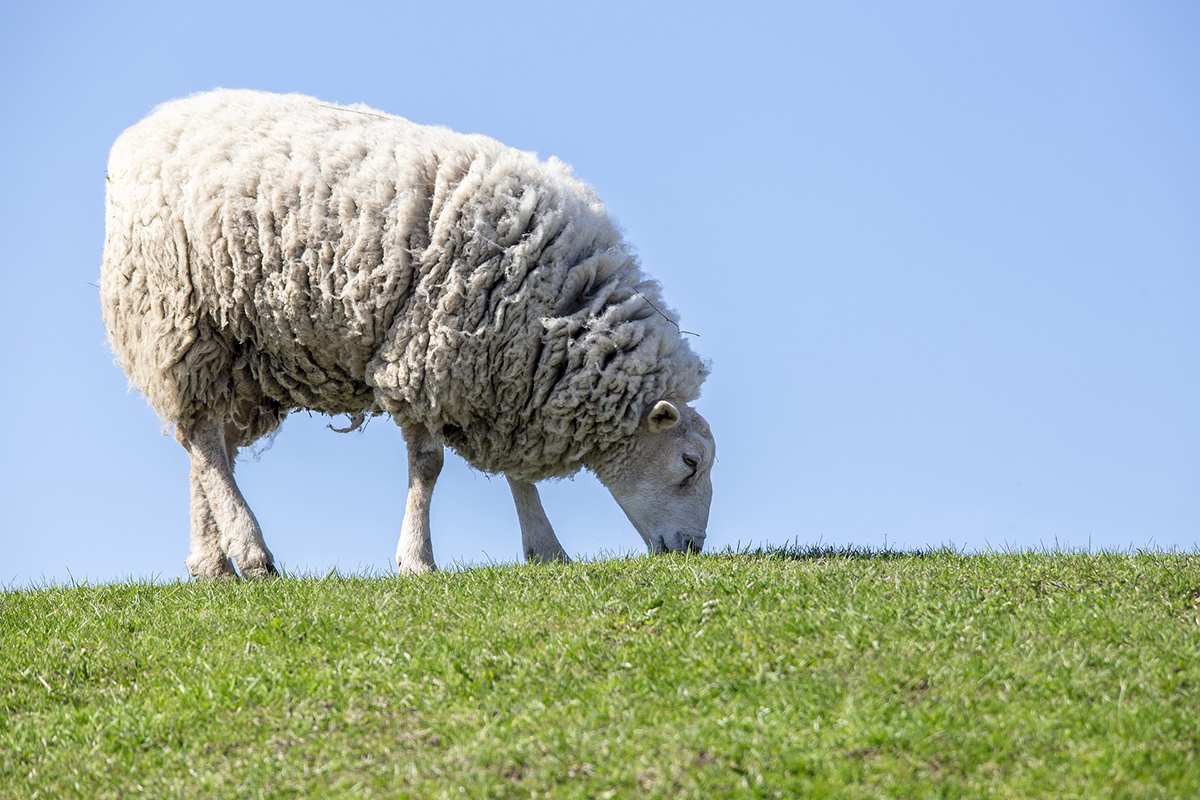
A new treatment for coarse wool is being explored by a multi-stakeholder team in Scotland. Jessica Owen talks to the companies involved to find out more.
Britain has more than 30m sheep spanning over 200 different breeds. And in 2021, more than 20.7m kg wool was clipped from these animals and sold at auction, according to British Wool.
But despite the large quantity up for grabs, Britain still imported an additional 36.1m kg wool from abroad in the same year, according to Statista. Why? Primarily because the quality of British wool is only considered good enough for applications such as carpets, which also means the wool is valued less than other fibres, such as Australian Merino. In fact, British wool costs farmers more than it’s worth.
In order to enrich and increase the utilisation of Scottish wool in particular, a project has been devised by textile mills Johnstons of Elgin and Prickly Thistle, the University of Edinburgh and the Industrial Biotechnology Innovation Centre (IBioIC).
Chima Onyeiwu, procurement and technical director, Johnstons of Elgin, says: “As part of our sustainability strategy, we have been looking at the impact of our raw materials and what options there are to use local material. So, we started talking to IBioIC about the technical opportunities to improve Scottish wool.”
Clare Campbell, founder and co-owner, Prickly Thistle, adds: “At Prickly Thistle, we want to make our tartan fabrics and products as authentically Scottish as possible. We were talking to IBioIC about using all and any plant as well as animal fibres that are native to Scotland. IBioIC saw that we and Johnstons were having similar conversations, so they asked if we wanted to join forces. They acted as our Tinder.”
Inspired by softening treatments for human hair, the aim of the project is to assess how different enzymes could be used to decompose coarse Scottish wool. By doing so, the team believes it could be made finer or softer and therefore become applicable for a wider range of products such as clothing.
This technical R&D part of the project is being led by Professor Dominic Campopiano at the University of Edinburgh. He and his team’s goal is to essentially make thick hair thin, by testing variables such as the temperature, quantity of the enzyme and length of time the fibres are treated for.
Onyeiwu says: “They are using the enzymes to break the bonds in the keratin structure to see if it will degrade into a useable material or just into soup.”
Campbell adds: “They’re also seeing if this can be done in a controlled way that would then allow us to scale.”
It’s a balancing act, according to the pair. For instance, they might succeed in altering the diameter of the hair but that might have knock-on effects concerning quality. Considering Scottish wool is renowned for its durability, which is essential for increasing the longevity of products, this is an extremely important part of the project that the team must manage, says Onyeiwu.
If the research proves successful, the desire is to create a solution that could be applied to the wool. Currently, the team does not know where best to apply this in the supply chain – it could be added to greasy wool, during scouring or as a final finish – but they are open to all possibilities.
They also want the treatment to be applicable to all Scottish wools – a one-stop-shop solution, if you will. This would help to maximise the quantity of wool available in the country, thus making the biggest impact.
Right now, a six-month project has already been conducted and the team is about to embark on a 10-week continuation of that over the coming summer. Campbell says afterwards they will consider issuing a three-year PhD to take the matter further. So, while it is still early-stage research, the team is already planning and getting excited about the journey ahead.
Onyeiwu says: “There are so many opportunities and potential. And we want to be open to the non-traditional outcomes as well. While making thick hair thinner is the aim, we could learn about different ways to dye wool or how to use fewer synthetic chemicals, for example.”
Campbell adds: “There are a lot of unknowns, but there could be some incredible curveballs too. But the most important thing is that we are committed to driving this forward because wool is an amazing natural fibre that we have in our country.”
Scottish wool growers are equally excited about the project. Onyeiwu says Johnstons of Elgin often gets enquiries from farmers asking about how they can add value to their wool, so there are many hoping for an encouraging project outcome.
Besides adding value, the project is also intriguing from an environmental sustainability standpoint. Using local wool would reduce carbon emissions from importing wool, and it is a natural fibre that biodegrades – characteristics that align nicely with initiatives such as the European Union’s (EU) new Strategy for Sustainable and Circular Textiles, for instance.
Campbell says: “We need to harness these natural fibres and use 21st century science, which wasn’t available hundreds of years ago when making traditional textiles from wool, to understand the scope of these materials.”
It might be some time until the team discovers and perfects a feasible solution, but the people involved have the right motivation and resources to make a good start. After all, collaboration is a key component to drive change, according to the Ellen MacArthur Foundation’s new book: Circular Design for Fashion.
She concludes: “We’ve got two textile companies in the far north of Scotland forming a collective to do something about this. By coming together with the world leading expertise that sits inside IBioIC, Professor Dominic Campopiano and University of Edinburgh, we can and will make change happen quicker together.”
Have your say. Tweet and follow us @WTiNcomment








